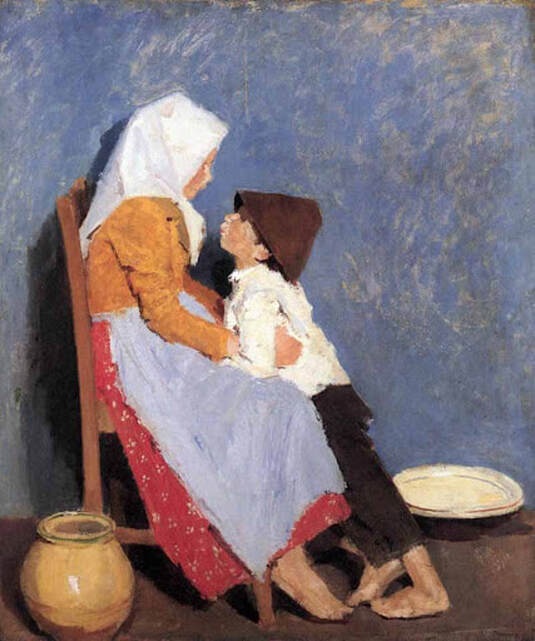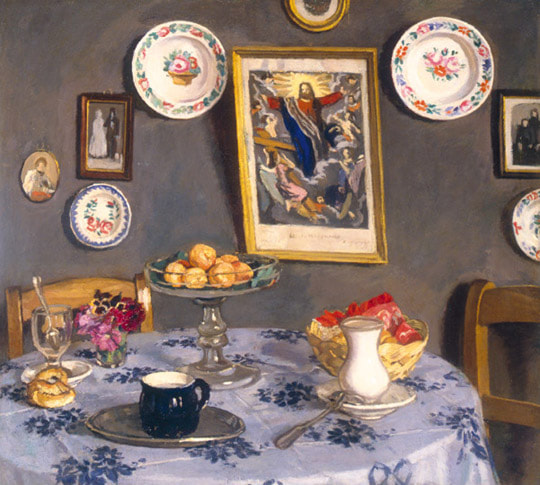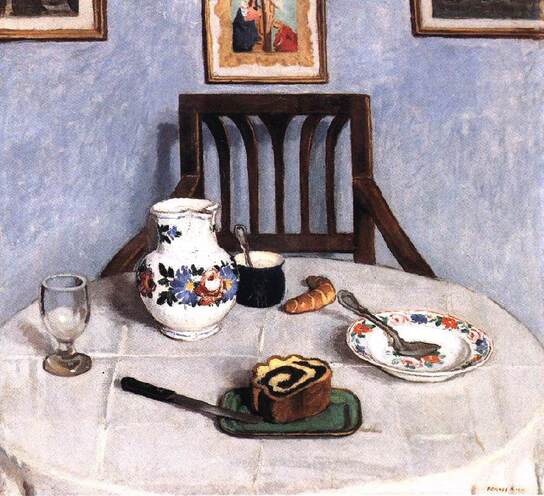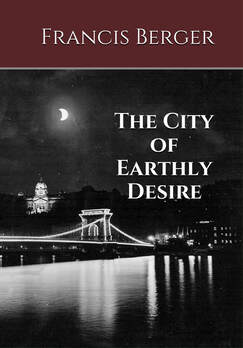Fényes's attraction to and involvement in the failed, oppressive Hungarian Soviet Republic haunted him for the remainder of his life. Though he was granted reprieves and exemptions by the Horthy Regime, Fényes's communist past and Jewish ancestry made him a marked man as World War II unfolded.
Toward the end of the Second World War, the Arrow Cross Party - who had by that time forced Horthy from power - interned Fenyés and most of Budapest's Jews into the Budapest Ghetto. Fényes barely survived the Siege of Budapest and died shortly afterward. Some sources claim he died in hospital after suffering a stroke; others claim he succumbed to hunger in the Hungarian capital in the aftermath of the 50-day battle that reduced most of Budapest to rubble.
As for Fényes's paintings, I appreciate the charming simplicity of his folk compositions; particularly his still lifes, which remind me of scenes I used to encounter whenever I visited the houses of grandparents and other older relatives during my childhood trips to Hungary.




 RSS Feed
RSS Feed

